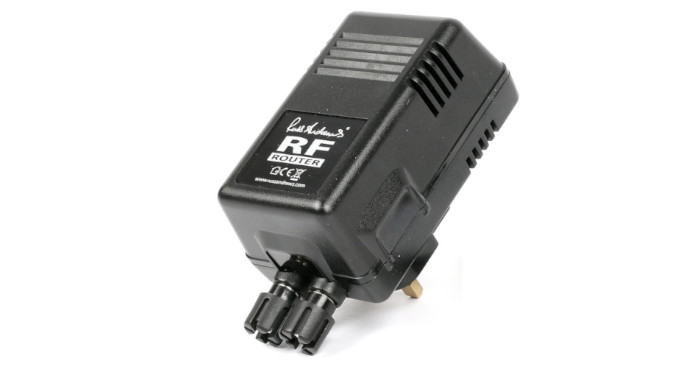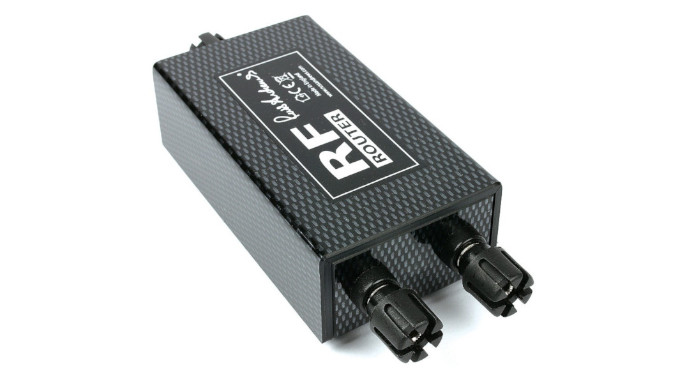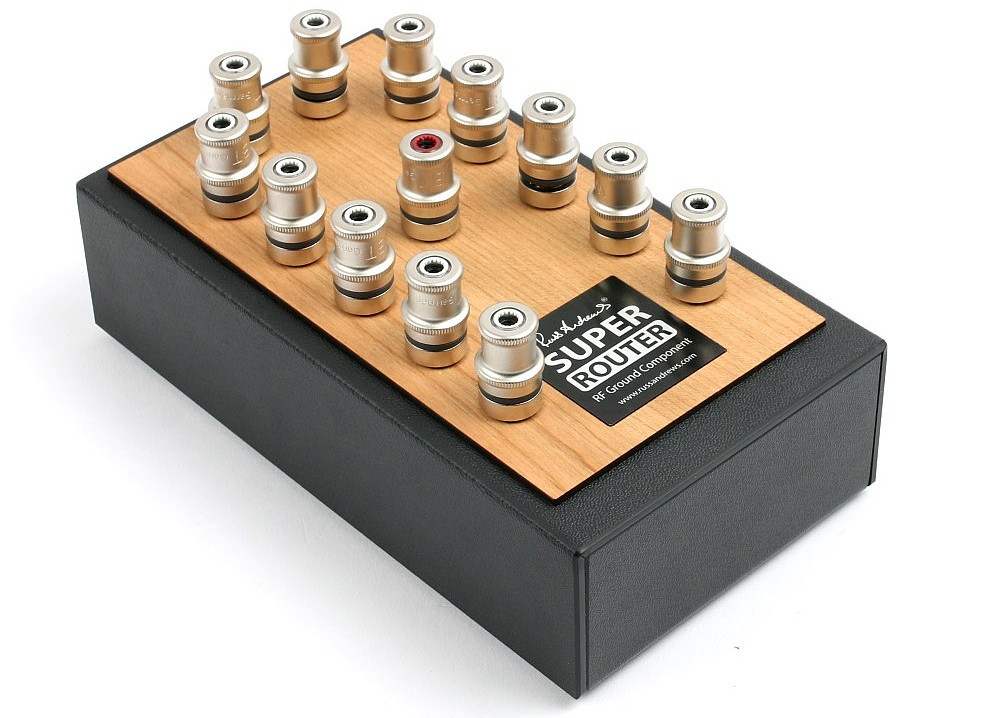Section 2
How to set up your Russ Andrews Grounding System
Click here to open a printable pdf of this article
What you’ll need
Grounding casework is very simple to achieve. The basic components are some grounding cables, some means of connecting the cables to the casework, an RF Router or SuperRouter, and a way of connecting your Router to Ground.
Choosing your RF Router
We have four different types of RF Router, and you will need to choose the most suitable one depending on how you are going to connect it, and the level of performance you want to enjoy.

RF Router Plug-In
The simplest type is the RF Router Plug-In, which is in the form of a ‘wall-wart’. It has two ground input terminals, but rather than having a binding post output, you simply plug it into a wall socket. It uses the earth pin of the wall-wart to connect RFI to ground. You must not use the RF Router Plug-In if you are fitting an additional external ground rod.

RF Router MKII
The RF Router MK II is the same specification as the RF Router Plug-In but is in the form of a compact box which has two ground inputs to connect your casework, and a single output binding post. You use this output to connect to the ground terminal on the front of our SuperSocket, UltraSocket or Signature socket, or use it to connect to an external ground rod.

SuperRouter
The SuperRouter is our best type of Router, using a more complex design, higher quality components and intelligent circuitry. It has 12 input binding posts and a single output binding post for connecting to the ground terminal on your wall socket, or to an external ground rod.
There are two versions of the SuperRouter – one with high performance nickel-plated binding posts and the Signature edition with WBT’s gold-plated pure copper binding posts for ultimate performance.
The SuperRouters should be used in the same way as the standard RF Routers – the additional binding posts are useful for more complex, multi-box systems and allow the connection to our screened EVO-S PowerKords.
Choosing your Grounding Wires
How your equipment is electrically wired will determine how best to integrate it into the grounding ecosystem and which ground cable to use – whether you attach to the metal casework or through the ground of an unused signal socket.
We have two primary ground cables available:
1. Technical Ground Weave – available in Basic or Premium varieties for components that are earthed
2. Technical Ground Tri-braid for double insulated components wired without an earth
1. Technical Ground Weave

Technical Ground Weave, and Premium Technical Ground Weave, are both available fitted with Kimber bananas for use with all grounding devices and grounding adaptor terminations.
Due to their robust design (thickness), we recommend they are best used in conjunction with one of the various chassis ground adaptors we produce, as they put less stress on the connection, which can often be to a small chassis screw.
2. Technical Ground Tri-braid

The second type of ground wire is for double insulated (Class II) components (see here) where you will need to ground via an unused signal socket. This is called Technical Ground Tri-braid and is available with a wide variety of connectors at the component end, such as RCA, USB, HDMI, BNC and RJ45, and a choice of connections at the destination end. See here for the full range.
All the Technical Ground Weave cables have the advantage of providing a lower resistance path to ground and also – like our Kimber speaker cables and interconnects – reduce the likelihood of the cable acting as an aerial for RFI.
All Technical Ground cables have a direction arrow to indicate best performance - when connecting your component to the Router, the arrow should always indicate the path towards the Router. Likewise, if the cable is being used to connect the Router to a Grounding point, such as a Ground Rod or wall socket with Ground termainal, the arrow should point towards the Ground.
DIY Option
We sell two 'off-the-reel' cables for a do-it-yourself option – Technical Ground Weave and 4mm Ground Wire. You’ll need some good quality wire strippers (see here) and connectors for a successful termination!

Click here for Section 2.1 - Connecting components which are earthed
Click here to view all grounding products






















